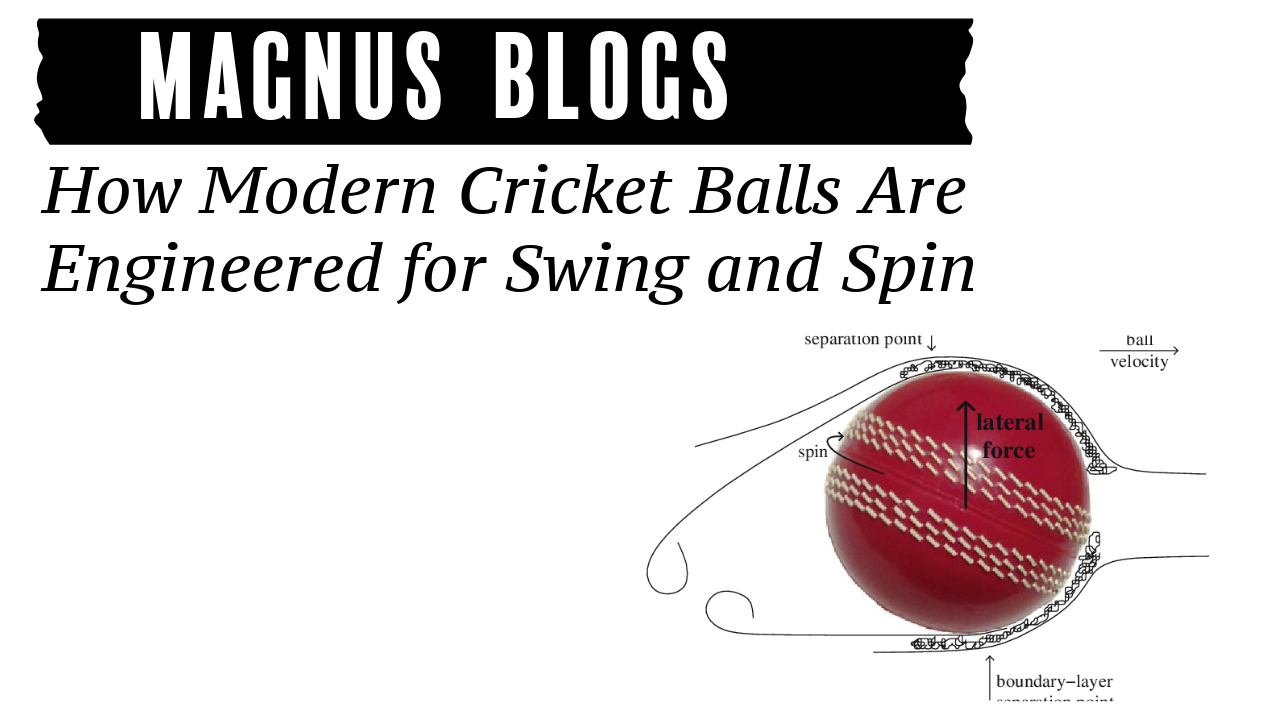Cricket is a game of skill, strategy, and precision, and one of the most fascinating aspects of the sport is how bowlers use swing and spin to outsmart batsmen. While technique and conditions play a major role, the engineering of modern cricket balls significantly influences their movement. This article delves into the science behind how cricket balls are designed to aid swing and spin, making them a crucial element of the game.
The Anatomy of a Cricket Ball
A cricket ball may look simple, but its construction is anything but. It consists of several key components that determine its behavior in the air and off the pitch:
-
Core: The core of the ball is made from tightly wound cork and string, giving it the required hardness and bounce.
-
Outer Leather Cover: A high-quality leather shell covers the ball, providing durability and grip.
-
Seam: The raised stitched seam, made of linen or synthetic thread, plays a vital role in swing and spin.
-
Polishing and Coating: The application of wax or lacquer gives the ball its shine and enhances its aerodynamics.

How Cricket Balls Generate Swing
Swing bowling is an art that relies on the ball’s aerodynamics to deviate in the air. The key factors that contribute to swing are:
1. Seam Positioning and Orientation
The raised seam disrupts airflow, creating pressure differences that cause the ball to move sideways. Bowlers keep one side of the ball rough while maintaining shine on the other side, influencing the amount and direction of swing.
2. Conventional Swing
Conventional swing occurs when the bowler keeps one side polished while allowing the other to wear down. The smooth side allows air to pass faster, while the rough side creates turbulence, resulting in movement either towards or away from the batsman.
3. Reverse Swing
When the ball becomes significantly worn out, both sides experience turbulent airflow, but the asymmetry in wear causes the ball to swing late and at higher speeds. This phenomenon is particularly effective when bowling above 85 mph (135 kph).
4. Ball Manufacturing Variations
Different cricket balls behave uniquely based on their manufacturer and design. For instance:
-
Dukes Balls (England): Known for a pronounced seam, assisting swing bowlers in overcast conditions.
-
SG Balls (India): Firmer seam and pronounced stitching, ideal for reverse swing and spin.
-
Kookaburra Balls (Australia & Limited-Overs Cricket): Less pronounced seam, making swing fade faster but promoting seam movement early on.
How Cricket Balls Enhance Spin
Spin bowling relies on grip, friction, and seam positioning to create revolutions that influence movement off the pitch. Here’s how modern balls aid spinners:
1. Seam Grip and Finger Positioning
The seam acts as a key grip point for spinners. Off-spinners and leg-spinners use their fingers and wrist to impart rotations, generating drift and turn when the ball lands.
2. Leather Hardness and Bounce
A harder ball bounces more, making it easier for spinners to extract turn. In contrast, a softer ball offers less bite on the pitch.
3. Surface Texture and Roughing Techniques
As the ball wears, spinners exploit its rough side to gain more grip on the pitch, enhancing the degree of spin. Bowlers also use footmarks and rough patches to make the ball deviate unpredictably.
The Future of Cricket Ball Technology
With advancements in sports engineering, manufacturers continue to refine cricket ball design to maintain a balance between bat and ball. Some emerging innovations include:
-
Smart Cricket Balls: Embedded with sensors to analyze speed, seam position, and spin rates.
-
Advanced Leather Coatings: Designed to enhance durability and maintain shine for longer periods.
-
Eco-Friendly Materials: Exploring sustainable alternatives without compromising quality and performance.
Conclusion
The evolution of cricket ball engineering has played a significant role in shaping modern-day cricket. Whether it's swing or spin, the design of the ball profoundly influences the game, providing bowlers with weapons to challenge even the best batsmen. As technology continues to evolve, cricket balls will keep adapting, ensuring that the sport remains as thrilling as ever.
Cricket bat types, Cricket equipment in usa, Cricket equipment store, Cricket gloves, Cricket helmet, Cricket kit bags, Cricket retailers, Durable cricket gloves, English willow bats, Icc approved helmets., Kashmir willow cricket bat, Latest kashmir willow bats,
certified cricket helmets usa, Bat store online, Batting gloves, Buiy cricket bats now,
